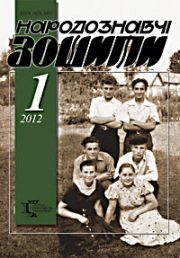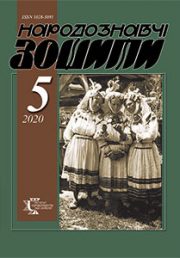The Ethnology Notebooks. 2021. # 2 (158), P. 451—455
УДК 7.036(477)”1980-1990″
DOI https://doi.org/10.15407/nz2021.02.451
Larysa SALATYUK
- ORCID ID: https://orcid.org/0000-0002-9398-8243
- Postgraduate student,
- the Lviv National Academy of Arts,
- 38, Kubiiovycha Street, 79011, Lviv, Ukraine
- e-mail: larasalatyuk@gmail.com
UKRAINIAN TRANSAVANGARDE: GENESIS AND STYLISTIC FEATURES
The article describes the features and stages of the emergence of the transvanguarde in Ukraine in the late twentieth century. Starting from 1980 and until the beginning of 1990, Ukrainian artists were reinterpreting previous traditions and were trying to modernize them and exclude national from soviet. The modernization stage in Ukrainian art lead to Non-conformism and then to transavantgarde. This foretold the overcome of the gap between worldwide and soviet traditions in the art. Besides, this was accomplished mostly due to the artists of 1980 generation who were not so committed to the soviet union as their predecessors. Ukrainian transavantgarde consisted of international and national values, had neobarocco spirit with its loss of integrity, instability and form inconstancy. The art of «transavantgarde neobarocco» united two art styles that were connected with keeping up the traditions. Firstly, this was transavantgarde art that was returning to avantgarde and secondly, it revived traditions of big historical manner.
For the first time, where the Ukrainian transavangarde represented itself, there was an exhibition of young artists «Youth of the Country» in Moscow in 1987, which featured a painting by Arsen Savadov and Georgy Senchenko «Sadness of Cleopatra». The picture is an obvious reference to Diego Velzquez’s «Equestrian Portrait of Infanta Balthazar Carlos» with a classic plot, open composition, restrained color, white palette, a clear transformation of forms and a red outline, which is an important detail in the works of the transavantgarde, as well as clear succession. baroque style. The Ukrainian transavantgarde has such features as large-format paintings, imitation of style (most common: naive art, expressionism and baroque), appeal to mythological or religious plots, to classical plots (you can also often find direct references to other paintings). The works have texture and an interesting element in the form of a red outline.
The last period of transavantgarde was during the second half of 1990. It was then that gradual retreat from transavantgarde and moving to modern art practices happened, the ones that are closely related with modern technologies.
Keywords: transavantgarde, modern art, transavantgarde neobarocco, nonconformism, «Paris Commune», «New wave».
REFERENCES
- Goryainov, V. (1983). Transavangarde at the Venice Biennale. Creativity, 3, 7—19 [in Russian].
- Reitburd, A. (2007). Gelman and his gallery. Retrieved from: http://azbuka.gif.ru/critics/guelman-and-gallery/ [in Russian].
- Solov’ev, A. (1988). Beyond the obvious. Preliminary reflections on one phenomenon, 10, 35 [in Russian].
- Levashov, V. (1989). Other person: Ukrainian phenomenon (view from Moscow), 12, 28—29 [in Russian].
- Akinsha, K. (1999). Wreath on the grave of Ukrainian postmodernism. Portfolio. Odessa Art of the 1990s: Sat. Texts (Pp. 12—15) [in Russian].
- Kuzma, M. (1993). Angels over Ukraine. Angels over Ukraine. Contemporary Ukrainian painting. Catalog (P. 15) [in Russian].
- Boborikin, A. (2014). Alexander Reitburd: «In all conflicts I am against conflicts». Retrieved from: http://artguide.com/posts/715 [in Russian].
- Solov’ev, A. (1999). Art of Ukraine of the 90’s (Reflections). Art journal, 28—29. Retrieved from: http://www.guelman.ru/xz/362/xx28/x28015.htm [in Russian].
- Rashkovetsky, M. (2009). Odessa contemporary visual art of the 1990s. Odessa: painting, graphics, sculpture (Pp. 60—64) [in Russian].





